Sensory Evaluation and Fatty Acid Composition of Broiler Chickens Fed Diets Containing with Prosopis Africana Essential Oil
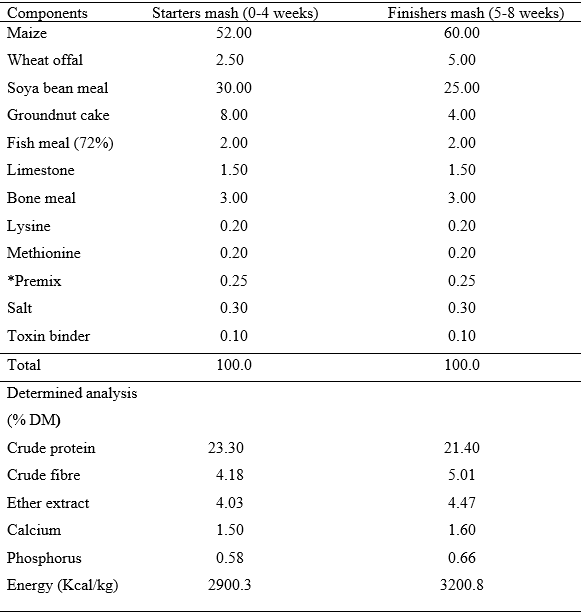
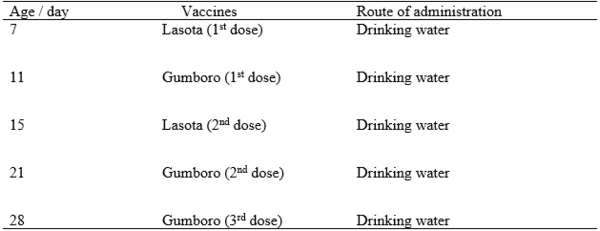
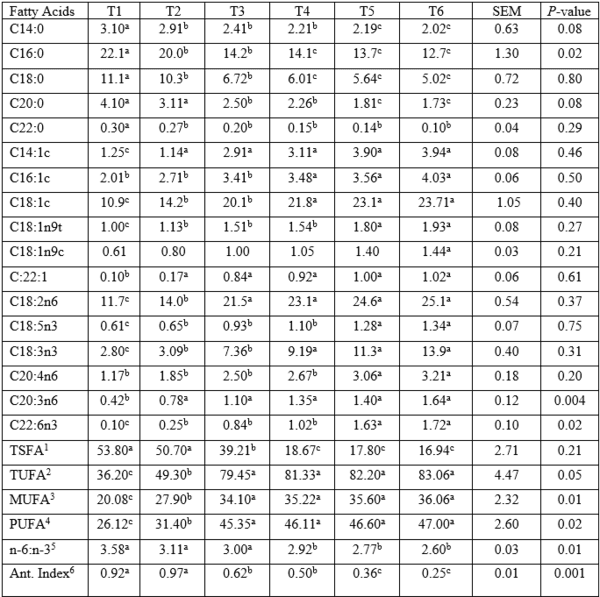
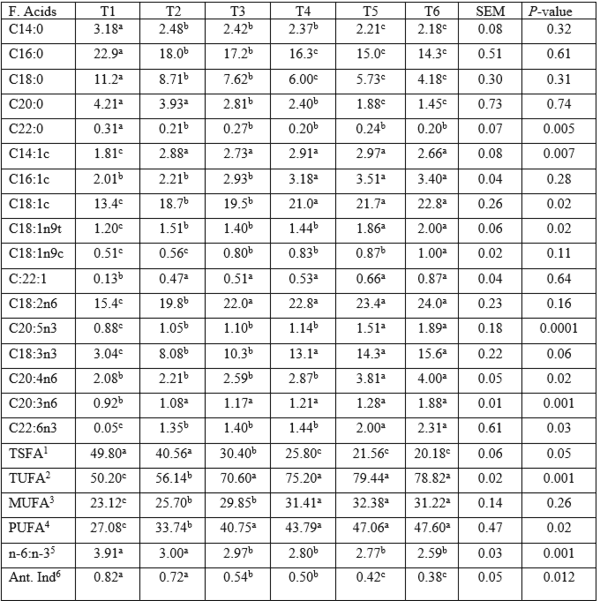
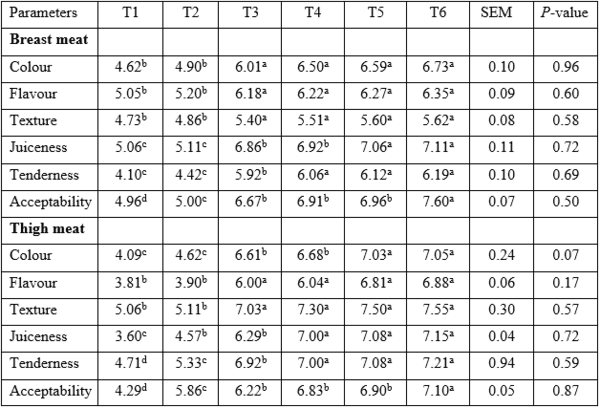
[1] Caroline, C.V. (2019). Improving feed efficiency and gut integrity in Escherichia coli challenged weaned pigs. International Pig Magazine, 1(4): 8-10.
[2] Sandra, C. (2020). Phytogenics: how to improve pig production efficiency with plants. International Pig Magazine, 8(1): 1-3.
[3] Chris, C. (2010). Gut flora and immune modulation by plant extracts. International Poultry Magazine 7(2): 1-2.
[4] Manu, D.L. (2006). Support gut health with a unique combination of fatty acid and phytogenics. International Poultry Magazine 7(8): 6-8.
[5] Jan, D., Van, K and Ester, V. (2016). Phytogenics: be one step ahead with plant derived feed additives. International Poultry Magazine 5(1): 3-5.
[6] Alagbe, Olujimi John, Oluchi, C.P Agubosi and Rufus, Adebisi Oluwafemi (2023). Histopathology of broiler chickens fed diet supplemented with Prosopis africana (African mesquite) essential oil. Brazilian Journal of Science, 2(9): 49-59.
[7] Alagbe, Olujimi John, Oluchi, C. Precious Agubosi., Rufus, Adebisi Oluwafemi., Taiwo, Oladoye Akande., Adegoke, Emmanuel Adegbite and Emiola, I.A. (2023). Haemato-biochemical indices and intestinal microbial population of broiler chickens fed diet supplemented with Prosopis africana (African mesquite) essential oil. Brazilian Journal of Science, 2(9): 98-110.
[8] Alagbe, J.O., Bamigboye, S., Nwosu, G.C., Agbonika, D.A and Kadiri Mercy Cincinsoko. (2023). Characterization of bioactive compounds in Luffa aegyptiaca leaf ethanolic extracts using gas chromatography and mass spectrometry (GC-MS). Drug Discovery, 2023; 17:e10dd1011.
[9] Alagbe, J.O., Kadiri, M.C., Oluwafemi, R.A., Agubosi, O.C.P and Anorue, D.N. (2023). Analysis of bioactive compounds in ethanolic extracts of Xylopia aethiopica leaves using gas chromatography and mass spectrometry technique. American Journal of Science on Integration and Human Development, 1(1): 1-10.
[10] Alagbe, J.O. (2023). Bioactive compounds in ethanolic extract of Strychnos innocua root using gas chromatography and mass spectrometry (GC-MS). Drug Discovery, 2023; 17:e4dd1005.
[11] Alagbe John Olujimi, Ramalan Sadiq Muhammad., Shittu Muritala Daniel and Olagoke Olayemi Christiana (2022). Effect of Trichilia monadelpha stem bark extract on the fatty acid composition of rabbit’s thigh meat. Journal of Environmental Issues and Climate Change 1(1): 63-71.
[12] Alagbe, J.O., Shittu, M.D and Tanimomo, Babatunde K. (2022). Influence of Anogeissusleio carpus stem bark on the fatty acid composition in meat of broiler chickens. European Journal of Life Safety and Stability 14(22): 13-22.
[13] Alagbe, J.O (2022). Use of medicinal plants as a panacea to poultry production and food security: A review. Gospodarka I Innowacje 22(2022): 1-12.
[14] Singh Sharma., Alagbe Olujimi John., Liu Xing., Sharma Ram and Kumar Amita (2022). Comparative analysis of ethanolic Juniperus thurifera leaf, stem bark and root extract using gas chromatography and mass spectroemetry. International Journal of Agriculture and Animal Production, 2(6): 18-27.
[15] Agubosi, O.C.P., Alexander, James and Alagbe, J.O. (2022). Influence of dietary inclusion of Sunflower (Helianthus annus) oil on growth performance and oxidative status of broiler chicks. Central Asian Journal of Medical and Natural Sciences 2(7): 187-195.
[16] Agubosi, O.C.P., Soliu, M.B and Alagbe, J.O. (2022). Effect of dietary inclusion levels of Moringa oleifera oil on the growth performance and nutrient retention of broiler starter chicks. Central Asian Journal of Theoretical and Applied Sciences 3(3): 30-39.
[17] Alagbe, J.O. (2022). Gas chromatography and mass spectroscopy of Juniperus phoenice stem bark extract and its influence on the haemato-biochemical values of growing rabbits. British Scientific Periodical 1(1): 18-33.
[18] Alagbe, J.O., Zubairu Habiba., Adedeji, O.M., Bamigboye, S and Dora Agbonika (2022). Influence of Juniperus thurifera root extract on the nutrient digestibility and caecal microbial count of growing rabbits. Web of Synergy: International Interdisciplinary Research Journal 1(1): 5-17.
[19] Alagbe, J.O., Shittu, M.D., Ramalan, S.N., Tanimomo, K.B and Adekunle, D.A. (2022). Growth performance, semen quality characteristics and hormonal profile of male rabbit bucks fed Rubia cordifolia root extracts. International Journal of Biological Engineering and Agriculture 1(1): 1-13.
[20] Agubosi, O.C.P., Imudia, Favour Dumkenechukwu and Alagbe, J.O. (2022). Evaluation of the nutritional value of air dried and sun-dried sweet potato (Ipomoea batatas) peels. European Journal of Life Safety and Stability 14(22): 43-51.
[21] Alagbe, J.O., Agubosi, O.C.P., Oluwafemi, R.A and Gabriel Zakara (2022). Efficacy of Trichilia monadelpha stem bark on the growth performance of growing rabbits. Best Journal of Innovation in Science, Research and Development, 1(2): 10-19.
[22] Shittu, M.D., Alagbe, J.O., Rafiu, T.A., Oye, K.E., Oladokun, P.O and Agbaje, I.A. (2020). Physiological response of mixed breed rabbits fed varied replacement levels of maize with cassava root meal. European Journal of Biotechnology and Bioscience, 8(5): 16-21.
[23] Alagbe, J.O and Akintayo-Balogun, O.M. (2020). Effects of dietary supplementation of Albizia lebbeck seed oil (ALO) on the fatty acid composition of weaner rabbits. Biochemistry and Biotechnology Research, 8(2): 29-33.
[24] Shittu, M.D and Alagbe, J.O. (2020). Phyto-nutritional profiles of broom weed (Sida acuta) leaf extract. International Journal of Integrated Education. 3(11): 119-124
[25] Akintayo Balogun Omolere. M and Alagbe, J.O (2020). Probiotics and medicinal plants in poultry nutrition: A review. United International Journal for Research and Technology, 2(1): 7-13.
[26] Alagbe, J.O (2020). Caecal Microbial Population of Growing Grass Cutters (Thyronoyms Swinderianus) Fed Phyllantus Amarus and Pilogstigma Thonngii Leaf Meal Mixture as Partial Replacement for Soya Bean Meal. Concept of Dairy and Veterinary Sciences. 3(5): 350 – 355.
[27] Oluwafemi, R.A., Oluwayinka, E.O and Alagbe, J.O. (2020). Effect of dietary supplementation of neem oil (Azadirachtia indica) on the growth performance and nutrient digestibility of weaned rabbits. European Journal of Biotechnology and Bioscience. 8(5): 6-10.
[29] Alagbe, J.O., Adeoye, Adekemi and Oluwatobi, O.A. (2020). Proximate and mineral analysis of Delonix regia leaves and roots. International Journal on Integrated Education. 3(10): 144-149.
[30] Alagbe, J.O., Shittu, M.D and Tanimomo, Babatunde K. (2022). Influence of Anogeissusleio carpus stem bark on the fatty acid composition in meat of broiler chickens. European Journal of Life Safety and Stability 14(22): 13-22.
[31] Adewale, A.O., Alagbe, J.O., Adeoye, Adekemi. O. (2021). Dietary Supplementation of Rauvolfia Vomitoria Root Extract as A Phytogenic Feed Additive in Growing Rabbit Diets: Haematology and serum biochemical indices. International Journal of Orange Technologies, 3(3): 1-12
[32] Al-Kassie, G.A.M (2009). Influence of two plant extracts derived from thyme and cinnamon on broiler performance. Pakistan Veterinary Journal 29:169-173.
[33] Alagawany, M., Ashour, E.A and Feda, F.M. (2015). Effect of dietary supplementation of garlic (Allium sativum) and turmeric (Curcuma longa) on the performance, carcass traits, blood profile and oxidative status in growing rabbits. Annals of Animal Science, 16: 489-505.
[34] Erener, G.N., Ocak, A., Altop, S., Cankaya, H., Murat, A and Ozturk, E. (2011). Growth performance, meat quality and caecal microbial count of broilers fed green tea extract. Asian-Australian Journal of Animal Science, 24: 1128-1135.
[35] Hashemipour, H., Kermanshasi, H., Golian, A and Veldkamp, T. (2013). Effect of thyme feed supplementation on the performance, antioxidant enzyme activities and fatty acid composition in broiler chickens. Poultry Science, 92: 2059-2069.
[36] Camy, M.L.Y., Redoy, M.R.A., Shuvo, A.A.S., Rahman, M.A and Al-Mamum, M. (2019). Effect of aqueous herbal extract on growth, plasma metabolites and meat characteristics of broilers. Bangladesh Journal of Animal Science, 48(2); 108-115.
[37] Yang, J.E., Ye Seul Seo., Muhammad, A.D., Hong, S.M., Hyeoung, S.P and Chul, J.Y. (2020). Physico-chemical attributes sensory evaluation and oxidative stability of leg meat from broilers supplemented with plant extracts. Journal of Animal Science and Technology, 62(5): 730-740.
[38] Mohammed, H.N. (2013). Study on some chemical, physical, sensory and bacteriology characteristics of canned chicken meat imported in Sulaymaniyah markets. Iraq International Nutrition, 5: 128 – 133.
[39] Puvaca, N., Kostadinovic, L., Popovic, S., Ljubojevic, D and Tufarelli, V. (2015). Proximate composition, cholesterol concentration and lipid oxidation of meat from chickens fed dietary spice addition (Allium sativum, Piper nigrum, Capsicum annuum). Animal Production Science, 56: 1920-1927.
[40] Jang, A., Liu, X., Shin, M., Lee, B., Lee, S and Lee, J. (2008). Antioxidative potential of raw breast meat from broiler chicks fed a dietary medicinal herb extract mix. Poultry Science, 13: 124-136.
[41] Florou, P.P., Palatos, G., Govaris, D., Botsoglou, I., Giannenas, I and Ambrosiadis, A. (2005). Oregano herb versus oregano essential oil as feed supplementation to increase the oxidative stability in poultry meat. International Journal of Poultry Science, 4: 866-871.
[42] Purohit, A and Vyas, K.B. (2006). Antiatherosclerotic effect of Capparis decidua fruit extract in cholesterol-fed rabbits. Pharmacology, 44: 172–177.
[43] Mohammet, A.T., Serkan, Y and Mehmet, A.Y. (2019). Effects of tarragon (Artemisia dracunculus) powder on broiler performance parameters and histopathology of internal organs. Australian Journal of Veterinary Science, 51: 113-118.
[44] Malahubban, M and Aziz, B. (2016). Serum biochemical properties and liver morphology of broiler chicken affected by feeding Masai kucing as a supplementary diet. Journal of Research and Bioctechnology, 8: 123 – 131.
[45] Sameh, A., Mahmoud, A., Mohammed, E.A., Asmaa, M.S., Islam, M.S and Ayman, A.S. (2018). Growth , carcass traits, blood haematology, serum metabolites, immunity and oxidative indices of growing rabbits fed diets supplemented with red or black pepper oils. Animals, 8: 168-173.
[46] Yesilbag, D., Eren, M., Agel, H., Kovanlikaya, A and Balci, F. (2011). Effect of dietary rosemary oil and vitamin E on performance, meat quality and serum SOD activity. British Journal of Poultry Science, 52: 4722 – 4826.
[47] Emani, N.K., Samie, A., Rahmani, H.R and Ruiz-Feria, C.A. (2012). The effect of peppermint essential oil and fructooligosaccrides as alternatives to virginiamycin on growth performance, digestibility, gut morphology and immune response of male broilers. Animal Feed Science and Technology, 175: 57-64.
[48] Ilias, G., Eleftherios, B., Efterpi, C and Panagiota, F.P. (2013). Essential oils and their applications in animal nutrition. Medicinal and Aromatic Plants, 2(6): 2-12.
[49] Krishan, G and Narang, A. (2014). Use of essential oil in poultry nutrition: A new approach. Journal of Veterinary and Animal Research, 1: 156-162.
[50] Reda, F.M., Alagwany, M., Mahmoud, H.K., Mahgoub, S.A and Elnesr, S.S. (2020). Use of red pepper oil in quail diets and its effect on performance, carcass measurements, intestinal microbiota, antioxidant indices, immunity and blood constituents. Animal 14: 1025-1033.
[51] Sarica, S., Corduk, M., Yarim, G.F., Yenisehirli, G and Karatas, U. (2009). Effects of novel feed additives in wheat based diets on performance carcass and intestinal tract characteristics of quail. South African Journal of Animal Science, 39: 144-157.
[52] Torki, M., Sedgh-Gooya, S and Mohammadi, H. (2018). Effects of adding essential oil of rosemary and chicory extract to diets on performance, egg quality and some blood parameters of laying hens subjected to heat stress. Journal of Applied Animal Research, 46: 1118-1126.
[53] Berri, C., Wacrenier, N and Millet, N. (2001). Effect of selection for improved body weight and meat characteristics of broilers from exoerimental and commercial lines. Poultry Science, 80(7): 833-838.
[54] Broncano, J.M., Petron, M.J., Parr, V and Timon, M.L. (2009). Effect of different cooking methods on lipid oxidation and formation of free cholesterol oxidation products in Latissimus dorsi muscle of Iberian pigs. Meat Science, 83: 431-437.


United States






